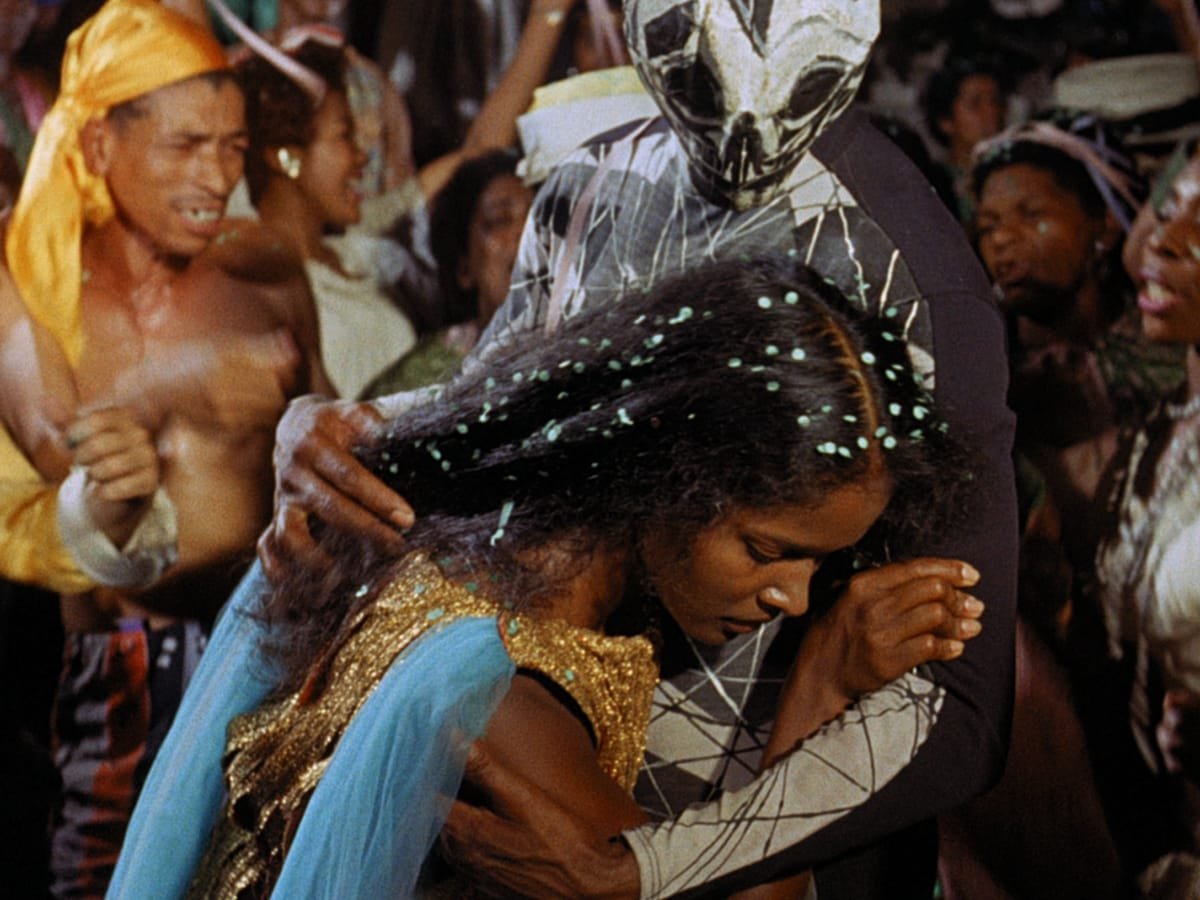Lawrence Philp (b. 1949)
Yoruba
1970-1971
oil and acrylic on canvas
72 x 60 inches
signed, dated, and titled verso
Provenance: the collection of the artist.
Illustrated: Lawrence Philp's Color Grid, University of Maryland Global Campus (catalog for the exhibition, 2022), p. 40.
Est. $20,000-30,000
The painting Yoruba is a commemoration of the film Black Orpheus, a 1959 romantic tragedy directed by French filmmaker Marcel Camus, and the scene where the protagonist goes to a Candomblé ceremony, and Eurydice speaks to him through a practitioner. The priest, a cigar, a chicken, and a statue with a crown. Candomblé is an African diasporic religion that developed in Brazil amid the Atlantic slave trade (1600s-1900s). Its practices are based on Yoruba and Congo traditions from Nigeria and West Africa. Interestingly, Jean-Michel Basquiat claimed the bossa nova soundtrack to the film was one of his early musical influences.
Stills and movie poster from the movie, Black Orpheus
PHOTO BY SHANNA FORTIER; Fortier, Shanna. “Lawrence Philp: The Curious Painter.” Observer Local News, Palm Coast Observer, 2 July 2014 .
Lawrence Philp was born in New York City in 1949 to parents who had immigrated from Jamaica in 1920. He studied at the Rhode Island School of Design (BFA) and the University of Michigan (MFA). One of his early influences was the work of Bob Thompson.
“I love looking at his work—the coloration, the flat figures that are reminiscent of the classicism of a painter like Masaccio or Piero della Francesca. Thompson was sampling the whole of the European Renaissance and making it his own subject matter playground.”
Another influence was Mahler B. Ryder: “Ryder taught me to butt color against color and to get out of the habit of outlining things in black and coloring them in.” (Taken from an interview published in the exhibition catalog, Lawrence Philp’s Color Grid, University of Maryland Global Campus, 2022, p. 50.
Philp participated in exhibitions at important venues such as Just Above Midtown, Peg Alston Fine Arts, Kenkeleba Gallery, and the Museo de Arte Modern de Buenos Aires and was recently the subject of a solo exhibition at the University of Maryland Global Campus (this work was included in that exhibit).





